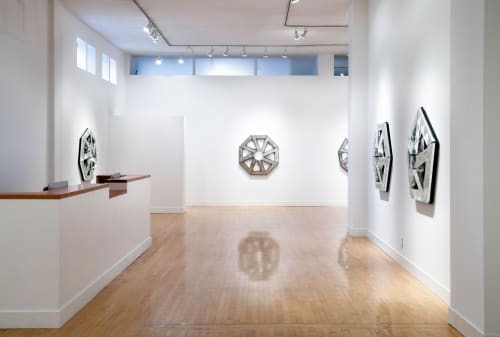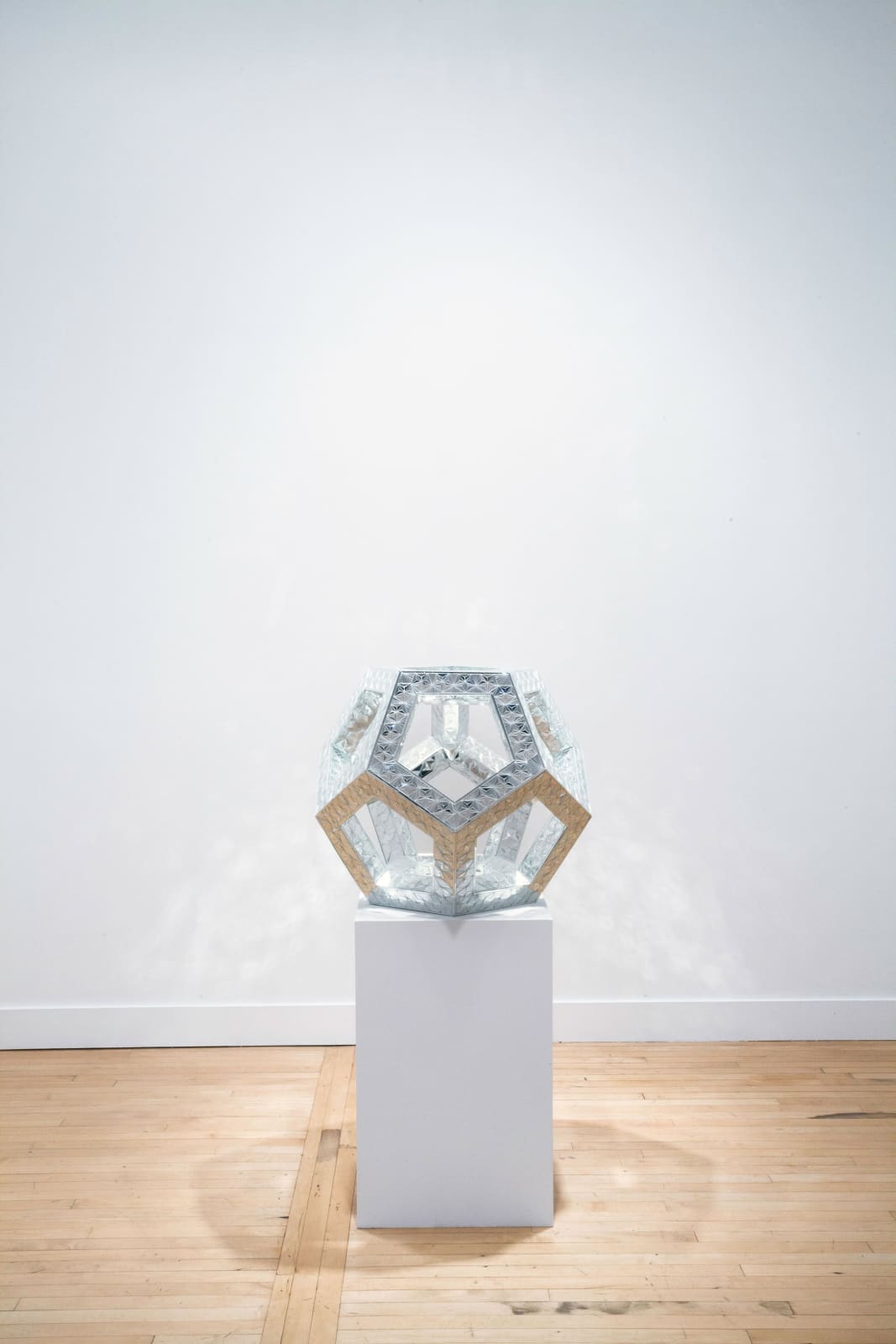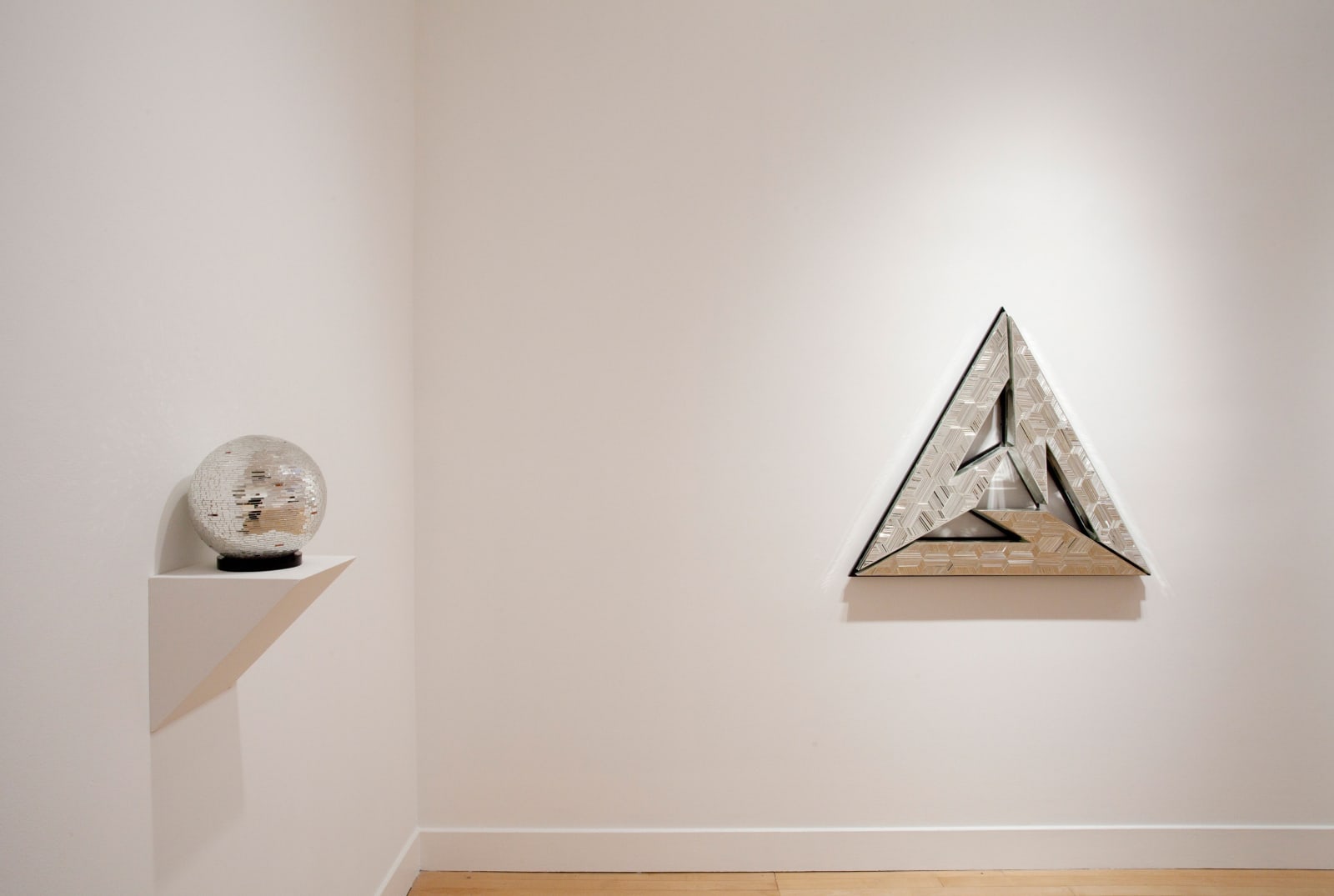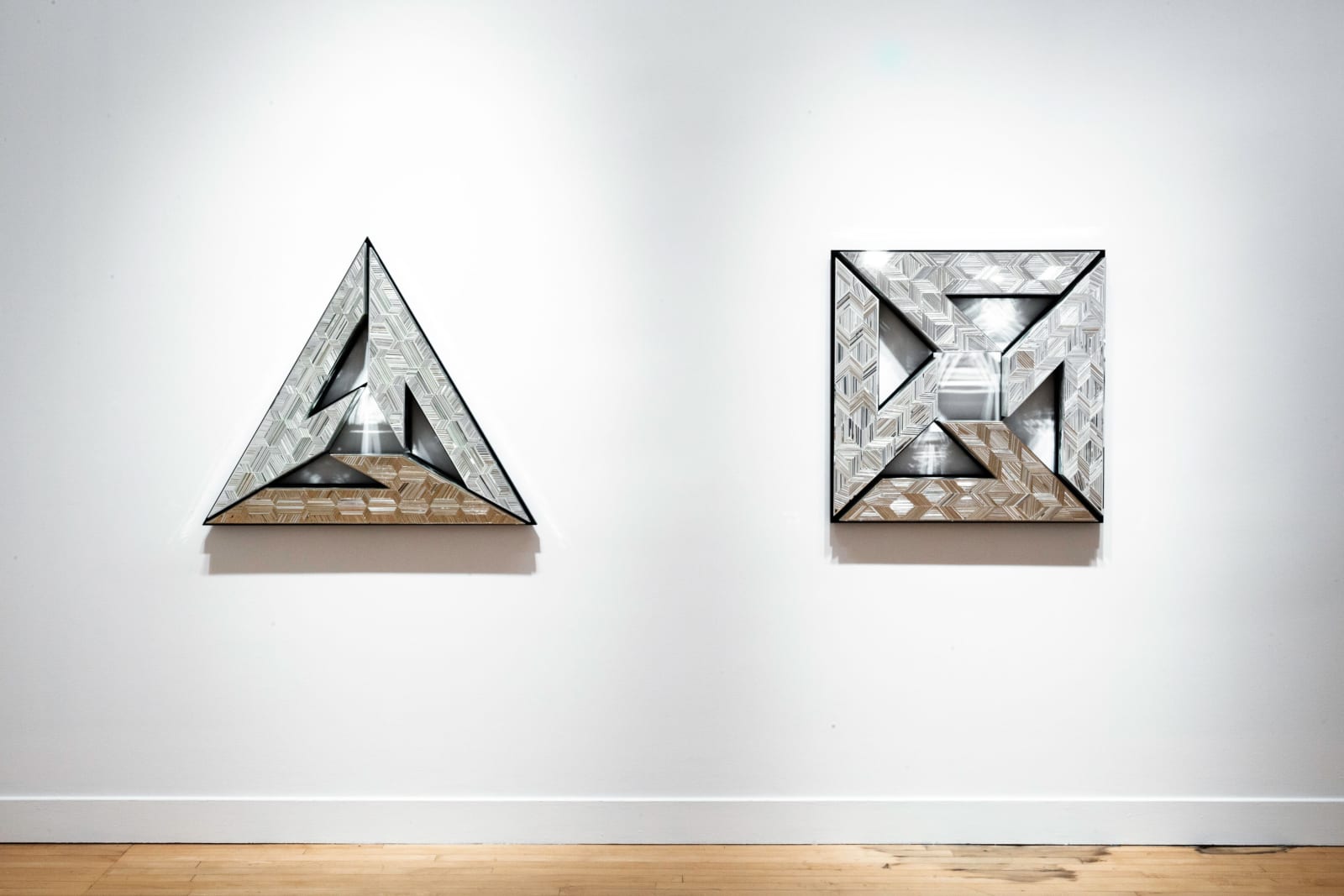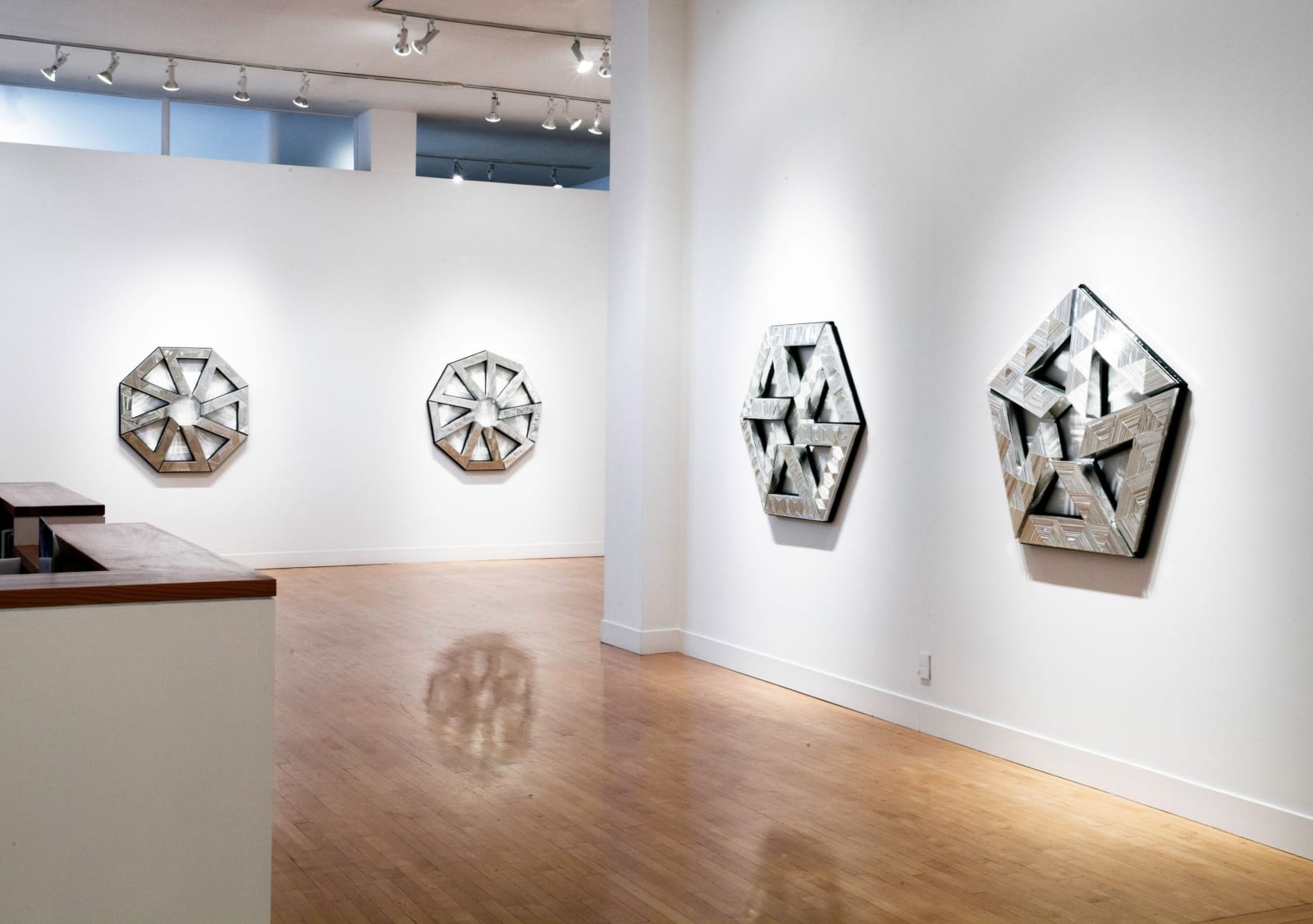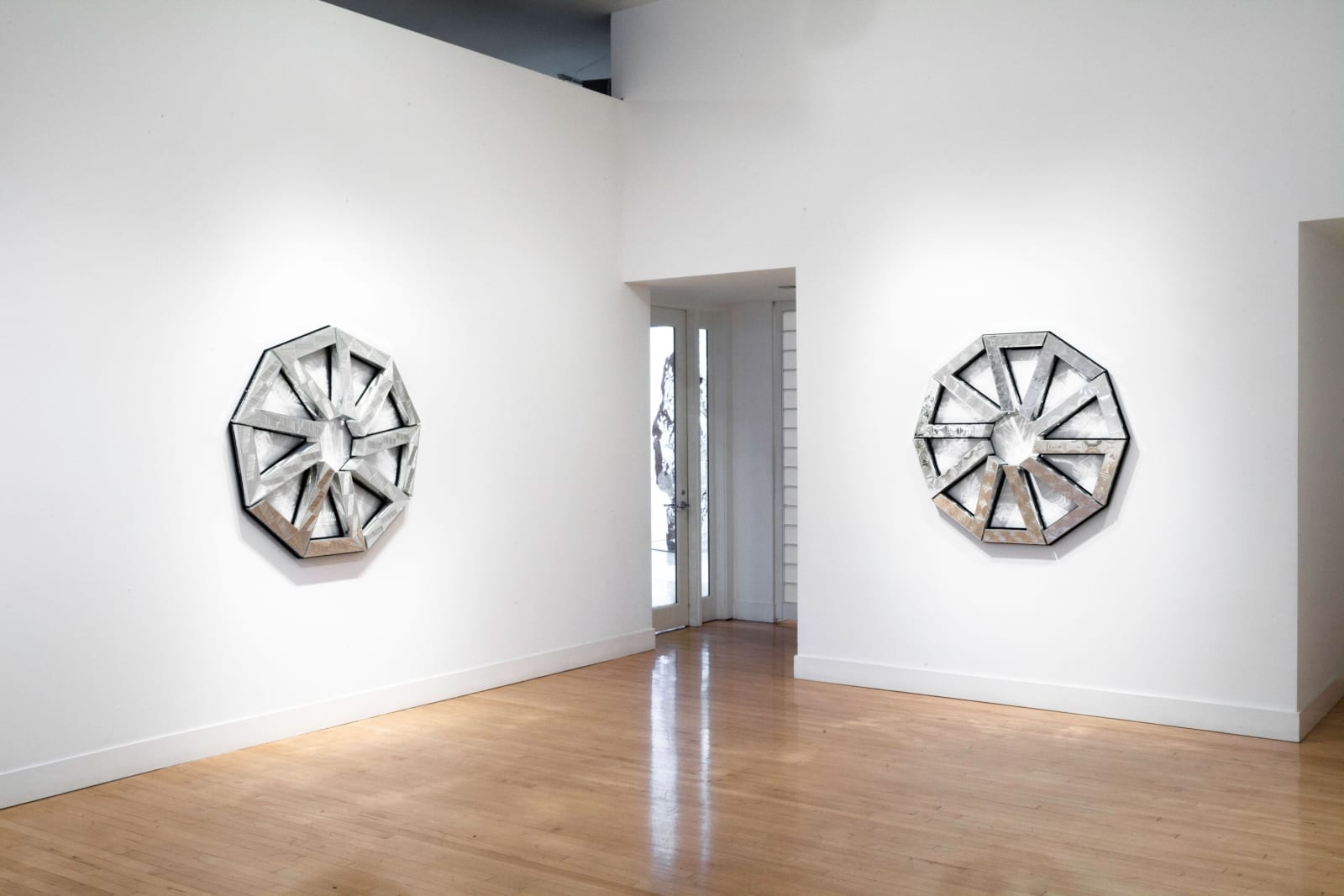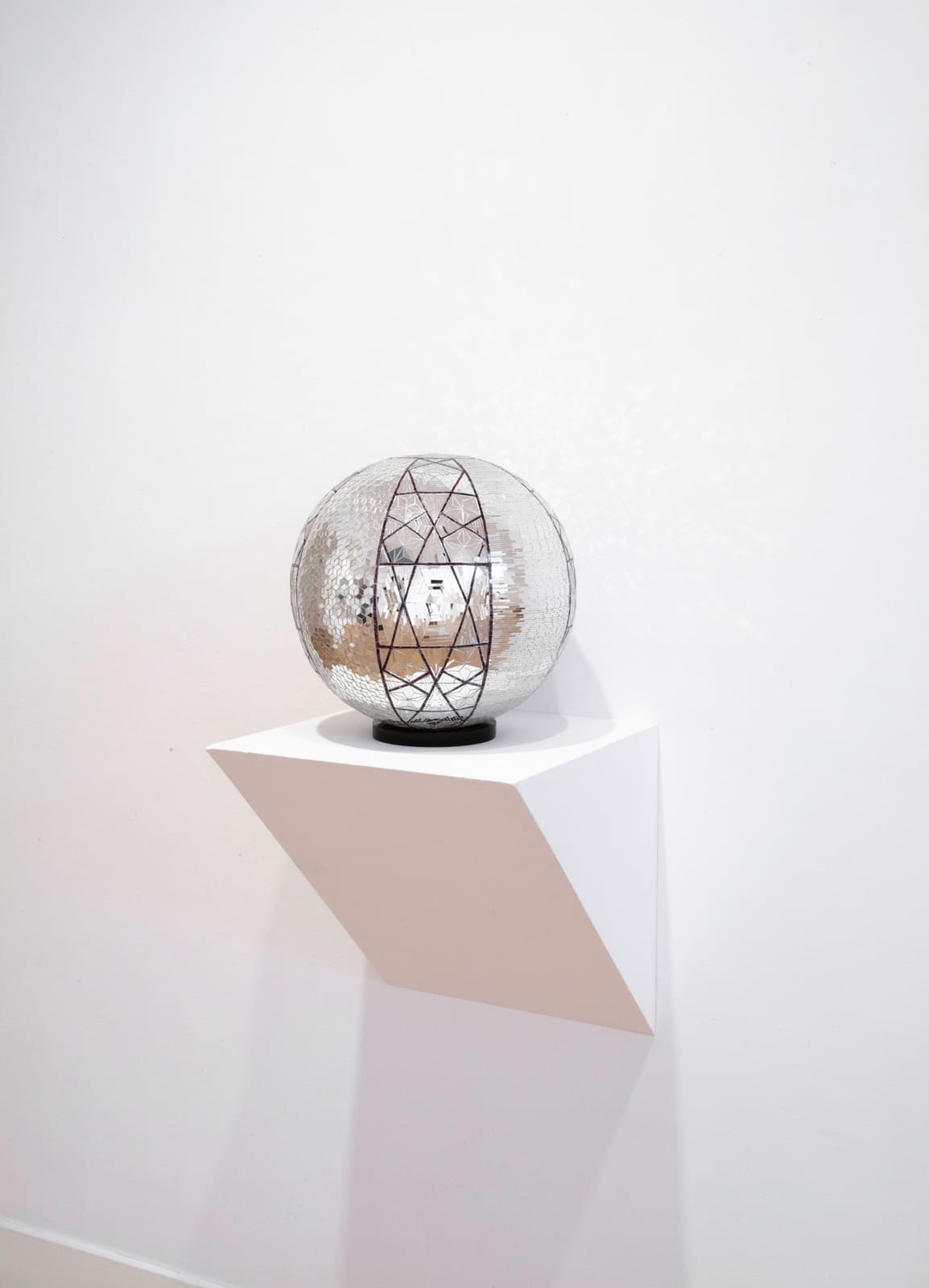Monir Shahroudy Farmanfarmaian: The First Family
A role model for the artist of the twenty-first century. – Hans Ulrich Obrist
Haines Gallery is very pleased to present the first solo exhibition of Iranian artist Monir Shahroudy Farmanfarmaian here on the West Coast which coincides with her current inclusion in the Iran Modern show at the Asia Society in New York, a major exhibition focusing on Iran’s dynamic modern art scene curated by Melissa Chiu.
Currently living and working in Tehran and celebrating her 90th birthday, Farmanfarmaian articulates her singular vision through reverse painted glass and mirror objects that recall both Qajar-era Persian interior decoration and high modernist abstraction of the 20th century. Having lived in New York during the 1940s and 50s as an art student at Cornell University and the Parsons School of Design, and later as a fashion illustrator for the department store Bonwit Teller alongside Andy Warhol, she absorbed the art of the new, Abstract Expressionism. This novel perspective – when layered upon her existing awareness of the arts and crafts of her native Iran and the refined historical decoration of its ancient cities — produces a singular aesthetic fusion of Persian pictorial language and pristine geometry. Her work at once references the spiritual geometry of Islamic architecture, most notable the tenants of Sufism, but with a distinctly post-modern edge.
Farmanfarmaian first received significant note in 1958 when she was awarded a gold medal for her work in the Iranian Pavilion at the Venice Biennale, leading to major exhibitions in Tehran, Paris and New York. Due to the Islamic Revolution of 1979, however, she was forced to leave Iran and took refuge in New York. Isolated from her cultural inspiration and the tools required to produce her work, her production was reduced remarkably, resulting in a pause in her career trajectory. Following her husband’s death, she returned to Tehran in 2000 where she reestablished a vibrant studio practice, resulting in an immense international resurgence of support of her work.
“All these polygons can be inscribed in a circle and the circle itself is nothing but a succession of points equidistant from the one point which is the center of the circle. If we divide the circle into three equal arcs and join the three points, we obtain a triangle. If we divide the circle in four equal arcs and join the four points, we obtain a square, and so on til we obtain a twelve-sided polygon, the do-decagon. Of course this division of the circle into equal arcs can go on to infinity, but after twelve, the only numbers that have symbolic significance are 28, the stations of the moon and the number of vertebrae, and 360, the number of solar days and the number of veins in the body.” — Monir Shahroudy Farmanfarmaian

